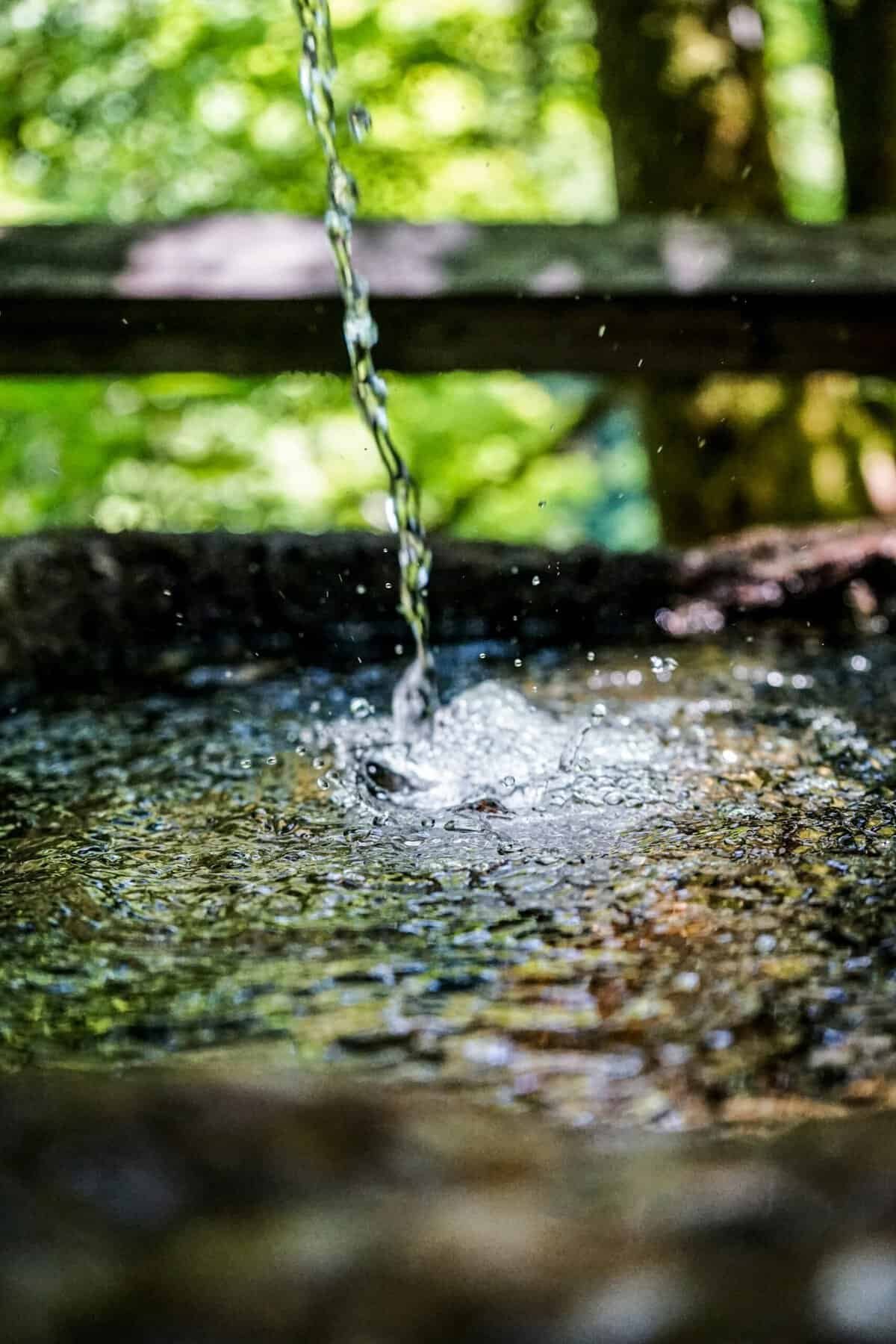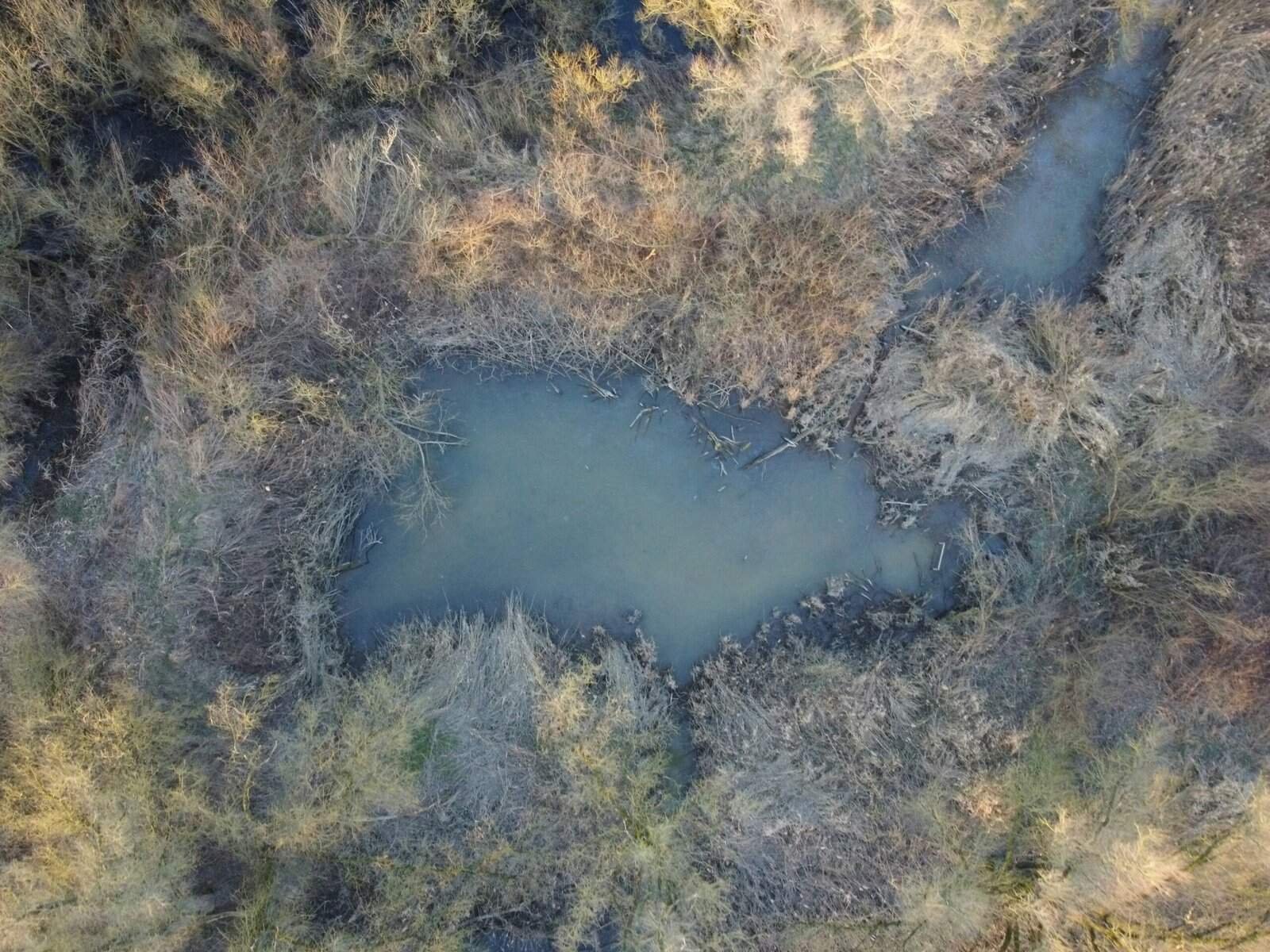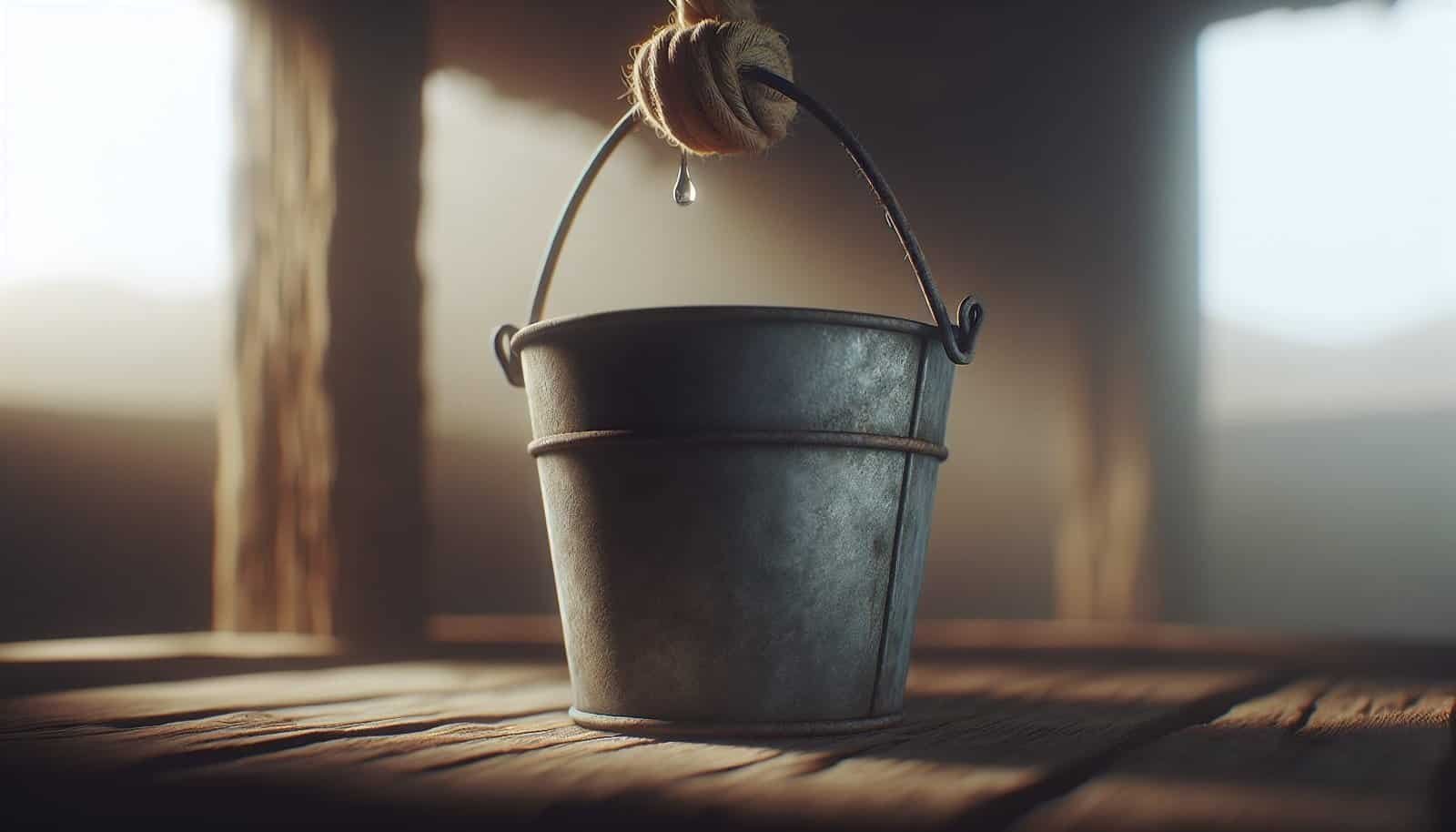Are you noticing weaker water flow, strange sounds from your pump, or other signs that something might be wrong with your well?
How Do I Know If My Well Is Running Low?
You want a clear way to tell if your well is losing water so you can act before you suddenly run out. This article walks you through the common symptoms, how to measure water level, causes, immediate steps, troubleshooting, and long-term fixes so you can protect your water supply.
Common Signs Your Well Is Running Low
Recognizing symptoms early gives you time to respond and possibly avoid a complete loss of water. The signs below cover what you can observe at faucets, from the pump, and in the yard.
Reduced Water Pressure and Flow
A steady decline in water pressure or slower flow from faucets and showerheads is one of the most common indicators. If pressure drops gradually over days or weeks, your well may be struggling to keep up with demand.
Well Pump Runs Longer or Short Cycles
If the pump is running much longer to provide the same amount of water, that usually means the pump is drawing from a lowered water level. Conversely, very short on/off cycles (short cycling) can indicate the pressure tank is not holding proper charge or the pump is losing supply quickly.
Gurgling, Sputtering, or Air in Pipes
Air bubbles, sputtering faucets, or gurgling sounds in the plumbing often mean the pump or well intake is drawing air because the water level has dropped below the pump intake. This can also damage the pump over time.
Discolored, Cloudy, or Sandy Water
Sediment, a gritty feel, or a sudden color change may indicate that the pump is drawing from near the bottom of the well or pulling fine material as levels drop. Increased turbidity can also be a sign of a compromised well screen or nearby disturbance.
Water Supply Fails at Certain Times of Day
If your well provides water in the morning but drops off in the evening, or pressure declines with high household use, that points toward insufficient well recovery during peak usage. Time-of-day patterns often indicate drawdown issues.
Visible Water Level Changes at the Wellhead
For wells with visible well caps or observation points, you might see evidence of lower water levels like changes around the casing or a drier surrounding area. This is less common but can be apparent in some setups.
Strange Noises from the Pump or Pressure Tank
Grinding, whining, or unusual noises in the pump or pressure tank can indicate the pump is running with inadequate water, which strains components. Persistent unusual sounds deserve immediate attention to prevent pump burnout.

How to Measure Your Well Water Level
Measuring is the only way to know how low the water is with certainty. Several methods range from simple to professional-level.
Static Water Level Measurement
Static water level is the distance from the top of the well casing to the water surface when the pump has been off for a while. You can measure it with a weighted tape or call a contractor for accuracy. This gives a baseline to compare against pumping levels.
Using a Sounding Tape
A sounding tape is a weighted tape marked in feet and inches that makes a sound on contact with water. You lower it into the well until you hear the splash, then note the depth. It’s inexpensive and effective for many homeowners when used carefully.
Electronic Water Level Meters
Electronic meters provide more precise, often digital, measurements and reduce the risk of contaminating the well. They are especially useful for deep wells and for repeated monitoring where accuracy matters.
Measuring Pumping Level and Drawdown
Pumping level is the water level while the pump is running. You measure it by lowering a meter while the pump runs to determine drawdown (difference between static and pumping level). Drawdown helps calculate well yield and whether demand exceeds recharge.
Pressure Tank and Gauge Observations
While not a direct measurement, pressure gauge readings and tank behavior can point to level problems. If the pressure drops unusually fast during normal use, it may reflect low well water or pressure-switch issues.
Table: Comparison of Water Level Measurement Methods
| Method | Accuracy | Cost | Best Use |
|---|---|---|---|
| Sounding tape (weighted) | Moderate | Low | Home checks, shallow wells |
| Electronic water level meter | High | Moderate to high | Deep wells, frequent monitoring |
| Professional well assessment | Very high | High | Complex problems, legal evidence |
| Pressure gauge/visual checks | Low | Low | Initial troubleshooting |
Causes of Low Well Levels
Understanding why your well is low helps you choose the right response. Causes range from normal seasonal change to more serious aquifer problems.
Seasonal Variations and Drought
Wells commonly reflect seasonal rainfall patterns: higher levels in spring, lower in late summer or fall. Extended droughts reduce aquifer recharge and can lower water tables significantly.
Overuse and Increased Demand
If you’ve added irrigation, livestock, or a new household, demand may exceed the well’s sustainable yield. Increased daily pumping can lower the water level over time.
Nearby Wells and Regional Pumping
Neighbors, municipal wells, or agricultural operations pumping the same aquifer can draw down the water table, affecting your well even if your usage hasn’t changed.
Well Construction or Casing Problems
A cracked casing, poorly sealed well cap, or a failing grout seal can change flow or allow surface water to bypass proper recharge pathways. Structural problems can also introduce contamination.
Clogged Well Screen or Sediment Fill
Screens can foul from mineral scale, biofilm, or sediment, reducing intake flow and making it seem like the well is low when the problem is actually restricted flow near the intake.
Aquifer Depletion or Reduced Recharge
Long-term groundwater exploitation without adequate recharge leads to sustained lower water tables. Land-use change (more pavements), deforestation, and groundwater pumping can all reduce recharge.
Equipment Problems (Pump Position, Drop Pipe)
If the pump slips lower or higher in the well or the drop pipe has a leak, you may get less water even with an adequate aquifer. Pump problems can masquerade as low water levels.

When to Monitor Your Well More Frequently
Some conditions require closer attention so you can act early and prevent failures. Knowing when to monitor more often keeps you ahead of trouble.
During Drought or Low Rainfall Periods
When precipitation is below normal, check static and pumping levels weekly or monthly depending on severity. Droughts can produce rapid declines.
When You Add Significant Water Use
If you install a large irrigation system, add rental units, or increase livestock numbers, begin monitoring immediately to confirm your well can sustain the new load.
After Nearby Construction or New Wells
New wells or large construction projects nearby can alter groundwater patterns. Monitor if changes occur in your neighborhood to see if they affect your supply.
When You See Early Warning Signs
Any initial signs like sputtering faucets or longer pump runtimes should prompt more frequent checks. Early action can often avoid a full system failure.
Immediate Steps to Take If You Suspect Low Well Levels
Acting promptly can stretch your water supply and protect your pump from damage. The steps below balance immediate needs and prevention of further harm.
Reduce Water Use Immediately
Limit showers, postpone laundry, and stop sprinklers. Saving water reduces pump strain and may prevent the well from running dry until you can get a professional assessment.
Turn Off Nonessential Water Systems
Irrigation systems, swimming pool fill lines, and other heavy users should be switched off. These systems can make a low-water situation much worse when they run unattended.
Check for Leaks and Running Fixtures
A hidden leak can make a perceived well shortage worse. Inspect toilets, faucets, and outdoor spigots to stop unnecessary water loss.
Inspect Electricals and Pump Controls
Make sure breakers and pump controls are functioning. A pump that won’t start is a different problem, but sometimes you’ll have both a failing pump and low water; identifying which is primary helps.
Use Stored or Alternative Water for Drinking
If supply is uncertain, use stored potable water, bottled water, or arrange a temporary supply. If quality is suspect, avoid drinking until tests confirm safety.
Table: Immediate Actions and Why They Help
| Action | Why It Helps | Expected Effect |
|---|---|---|
| Reduce household water use | Lowers daily demand on well | Slows drawdown, preserves supply |
| Shut off irrigation | Stops heavy, continuous pumping | Immediate drop in overall water use |
| Check for leaks | Eliminates avoidable water loss | May restore normal performance |
| Inspect pump/controls | Identifies electrical or control issues | Prevents misdiagnosis of low well |
| Use alternative water | Ensures safe drinking supply | Protects health until tests/results |

How to Troubleshoot Your Well System
You can rule out some problems yourself before calling a contractor. Basic checks can differentiate between a pump problem and a low water level.
Confirm the Problem Is Not Just Pressure Tank or Switch
A failed pressure tank or switch can mimic low well symptoms. Check the pressure gauge, listen for short cycling, and consider testing tank precharge pressure. If the tank isn’t holding pressure, it may need repair or replacement.
Listen to the Pump and Watch Run Time
When you turn on a tap, listen to the pump. If it runs longer than usual or makes suction-type noises, suspect low water level or pump stress. If it doesn’t run at all, check breaker, pressure switch, or call a technician.
Measure Static Water Level After the Pump Has Been Off
Turn off the pump for several hours (long enough for the well to recover) and measure the static level with a sounding tape or meter. This gives you a baseline for subsequent tests.
Conduct a Simple Flow Test
Run a nearby faucet at a steady stream and time how long it takes to fill a known volume (like a 5-gallon bucket). Compare this to previous performance or to the pump’s rated capacity to see if yield has fallen.
Check for Air in the System
Bleed faucets to determine if the problem is air entering the system through a drop pipe leak or a low water level. Persistent air often means pump intake is near the water surface or there’s a leak in the pump assembly.
Look for Visible Wellhead Issues
Check well cap integrity, signs of tampering, or evidence of contamination near the wellhead. A cracked cap or missing grout could allow surface water or animals access into the well.
When to Call a Professional Well Contractor
Some tasks require specialized tools and training. Knowing when to call helps avoid costly mistakes or dangerous situations.
Pump Pulls and Submersible Repairs
If the pump is suspected to be faulty, or you need accurate pumping-level measurements, a licensed well contractor must pull the pump and inspect the system. This is not a DIY job for most homeowners.
Measuring Accurate Drawdown and Specific Capacity
Professionals can perform pump tests that measure well yield and drawdown and provide data you can use for long-term planning. These tests also inform whether the well can meet additional demand.
Well Rehabilitation, Deepening, or Redrilling
If the well is physically compromised, severely silted, or aquifer levels require deeper access, a contractor can rehabilitate or deepen the well, or advise on redrilling options where necessary.
Contamination or Structural Failure
If you detect turbidity, bacterial contamination, or structural failure of casing, call a professional for testing and repair. Health and safety issues need immediate, skilled attention.

Long-Term Solutions to Low Well Levels
Once you’ve confirmed a low well, there are long-term strategies to restore or secure your water supply. Each option has costs, benefits, and timeframes.
Water Conservation and Demand Management
Reducing total water use by upgrading fixtures, timing irrigation, and changing habits helps sustain the well for longer periods. Conservation is frequently the most cost-effective first step.
Increase On-Site Storage
A holding tank or cistern gives a buffer during peak demand and allows you to pump less often. Storage buys you time and can reduce short-term stress on the well during high-use periods.
Deepen or Redevelop the Well
Well deepening or redevelopment (cleaning, removing sediment) can restore yield. These actions should be performed by experienced professionals and may be less expensive than a full redrill.
Drill a New Well or Re-locate
If the aquifer is inaccessible at your current location, a new well may be the only solution. Redrilling is expensive but sometimes necessary when the original location no longer provides adequate supply.
Connect to Municipal/Alternative Supply
If feasible, connecting to a municipal water system removes dependence on groundwater. This is sometimes the most reliable long-term option but depends on availability and cost.
Table: Long-Term Solutions and Typical Cost Range (US estimates, variable)
| Solution | Typical Cost Range | Pros | Cons |
|---|---|---|---|
| Conservation upgrades | $100–$3,000 | Low cost, immediate savings | May not fully solve low yield |
| Storage cistern/tank | $1,000–$15,000 | Buffer during peak use | Requires space and maintenance |
| Well redevelopment | $500–$3,000 | Restores yield, less invasive | Effect may be temporary |
| Well deepening | $2,000–$10,000+ | Access deeper aquifer | Cost variable by geology |
| New well drilling | $5,000–$50,000+ | Fresh supply potential | Highest cost, location dependent |
| Connect to municipal | Varies widely | Reliable supply | Infrastructure and fees |
Preventative Maintenance and Monitoring
Preventing a low-water crisis is usually cheaper and less stressful than responding to one. Regular checks and small investments in monitoring will pay off over time.
Annual Testing and Inspections
Test water quality annually and have a professional inspect the pump and wellhead periodically. Routine inspections catch early signs of decline or contamination.
Keep Records of Levels and Pump Performance
Record static and pumping levels, run times, repair dates, and any anomalies. A trend log lets you see slow declines before they become emergencies.
Maintain Proper Wellhead Sanitation
Ensure well caps are secure, vents are screened, and surface runoff cannot enter the well area. A clean, well-protected wellhead prevents contamination and protects recharge.
Install Remote Monitoring
If your budget allows, install a water-level sensor or smart pressure monitor that alerts you to falling water levels or pump problems. Remote monitoring gives real-time early warnings.
Protect Recharge Areas
Maintain permeable surfaces where practical, avoid paving near the well, and manage landscaping to promote infiltration. Land use around your property affects recharge rates.
Water Conservation Tips for Well Owners
Small changes add up fast. Using water efficiently reduces the load on your well and can prevent future shortages.
Indoor Conservation Measures
Install low-flow fixtures, fix household leaks promptly, use high-efficiency appliances, and reduce unnecessary water-intensive activities. Prioritize drinking and sanitation needs if supply tightens.
Outdoor Conservation Strategies
Use drip irrigation, water in early morning or evening, choose drought-tolerant plants, and limit lawn areas. Consider rain harvesting and greywater for non-potable outdoor uses where allowed.
Scheduling and Staggering Usage
Avoid running multiple heavy users at once (dishwasher, washing machine, sprinkler). Staggering loads reduces peak demand and can keep pressure more stable.
Harvest Rainwater and Reuse Greywater
When legal in your area, rain barrels or cisterns and greywater systems can provide non-potable water for irrigation and reduce groundwater demand. These systems require proper installation and maintenance.
Seasonal Variations and What to Expect
Groundwater and wells respond to seasonal patterns, so being prepared helps you anticipate changes.
Spring Recharge and Summer Drawdown
Many wells are highest in late winter/early spring after snowmelt or rainy seasons, and lowest in late summer or fall. Plan heavy water uses accordingly.
Freeze and Thaw Considerations
In colder climates, freezing can impact surface systems and pressure tanks. Insulate pipes and maintain the wellhead to prevent freeze-related downtime.
Lag Time Between Rain and Aquifer Response
It can take weeks or months for precipitation to recharge deeper aquifers. Don’t assume a single storm will fully restore a depleted well immediately.
Understanding Well Terminology
Knowing basic terms helps you understand reports, contractor recommendations, and test results. Use this glossary to get comfortable with common phrases.
Table: Key Well Terms and Definitions
| Term | Definition |
|---|---|
| Static water level | Depth from well top to water surface when pump is off |
| Pumping level | Water depth while pump is operating |
| Drawdown | Difference between static and pumping levels |
| Specific capacity | Yield per unit of drawdown (gpm per ft) |
| Well yield | Amount of water a well can provide (gallons per minute) |
| Aquifer | Underground layer of water-bearing rock or sediment |
| Artesian well | Well tapping a confined aquifer with pressure above ground level |
Health and Safety Concerns with Low Wells
Low water levels can increase risks to your water quality and to the safety of the system. You should treat these risks seriously.
Increased Contaminant Concentration
When water volume drops, existing contaminants may become more concentrated, raising health risks from chemicals or minerals. Testing is important after notable level changes.
Bacterial Contamination Risk
If the wellhead is compromised or surface runoff infiltrates the casing during low water conditions, bacteria (including coliforms) can enter the supply. Boiling fights bacteria but not geological contaminants.
Pump Damage and Electrical Hazards
Running a pump without adequate water can severely damage it and increase electrical risk. Protect your system by turning off pumps if you suspect it’s drawing air or running dry.
Safe Drinking Water Steps
If you suspect contamination, use bottled water for drinking and food prep until lab tests confirm safety, and consult local health authorities for testing recommendations.
Frequently Asked Questions
Answers to common concerns help you act when you notice symptoms and decide whether to attempt DIY fixes or call a pro.
How quickly can a well recover after rain?
Recovery timing varies widely by well depth, aquifer type, and local geology; shallow groundwater can respond in days or weeks, while deep aquifers may take months. Monitor and record changes to understand your particular well’s response.
Can a well run dry permanently?
Yes. If an aquifer is depleted or changes in hydrology occur, a well can permanently lose sufficient yield. In some cases redevelopment or deeper drilling solves the problem, but not always.
How do you tell if the pump or the well is the problem?
If the pump doesn’t run at all, check electricals first. If the pump runs but there’s poor flow and air, measure static level to see if water is low. A professional pump test can definitively separate pump failure from low well yield.
Is it okay to keep pumping a low well to find water?
No. Continued pumping when the well is low is likely to damage the pump and reduce long-term yield by mobilizing sediment. Conserve water and schedule a professional test instead.
How often should I test my well water quality?
You should test annually for bacteria and nitrates, and after any event (flooding, pump failure, low water) or if you see unusual taste, odor, or appearance. More frequent testing may be warranted if you have known contamination risks.
Final Checklist: What to Do Right Now
Use this checklist to prioritize actions if you think your well is running low. Taking quick, sensible steps can prevent bigger problems.
- Stop or reduce nonessential water use immediately and disable irrigation systems.
- Check for visible leaks and running fixtures around the property.
- Measure static water level after the pump has been off for several hours.
- Inspect the pressure gauge and listen to pump behavior during operation.
- Use stored or alternative potable water for drinking until you confirm safety.
- Contact a licensed well contractor for a pumping test and professional evaluation.
- Keep a log of water levels, pump run times, and any maintenance actions.
Where to Get Help and Additional Resources
If you need help, local licensed well drillers, pump companies, or your county health department are good starting points. They can perform tests, provide professional advice, and recommend solutions tailored to your aquifer and well construction.
You don’t have to handle a low-well situation alone — timely action and appropriate professional help will protect your water supply and system. If you want, tell me more about the symptoms you’re seeing (pump behavior, pressure changes, or test results) and I can suggest the most likely next steps.
